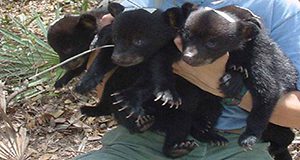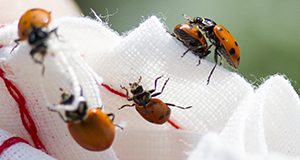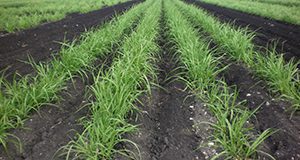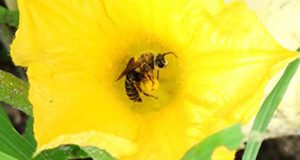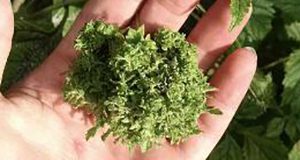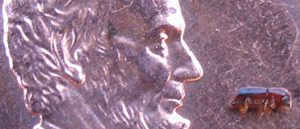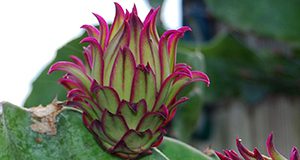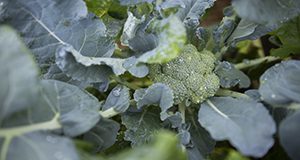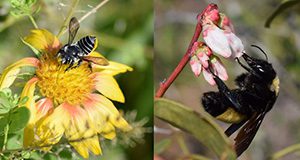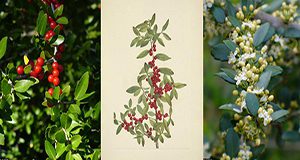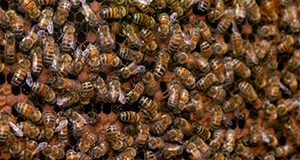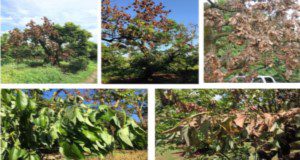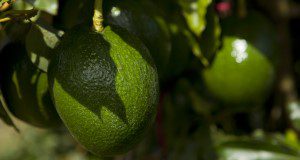The American black bear is beloved, but it is also the most damaging vertebrate pest of honey bee apiaries in North America. That is in part because bears and beekeepers often share the same home territory. Many top beekeeping and pollination states also fall within the range of the American black bear. Can bears and beekeepers live in peace together? This 6-page fact sheet written by Kimberly K. Post and Cameron Jack and published by the UF/IFAS Entomology and Nematology Department details the basic steps for installing an electrified bear fence around a bee yard so that savvy beekeepers can protect hives and honey without harming honey-loving bears.
https://edis.ifas.ufl.edu/in1318
Tag: Entomology and Nematology Department
2021 Guidelines for Purchasing and Using Commercial Natural Enemies and Biopesticides in North America
This 14-page guide written by Lynn M. LeBeck and Norman C. Leppla and published by the UF/IFAS Entomology and Nematology Department provides assistance in selecting, purchasing and using commercially available natural enemies and biopesticides for managing accurately diagnosed pest problems.
https://edis.ifas.ufl.edu/in849
Abundance of Soil Insect Pests in Florida Sugarcane
This 6-page fact sheet written by Ron Cherry, Mabry McCray, Hardev Sandhu, and Michael Karounos and published by the UF/IFAS Entomology and Nematology Department is intended to inform sugarcane growers, scouts, pesticide applicators, and researchers about fluctuations of economically important sugarcane pests and implications for the management of those pests.
https://edis.ifas.ufl.edu/in1313
Insect Management for Onions, Leek, and Garlic

Sweet varieties of bulbing onions, which make bulbs under short day conditions and do not store well, are by far the most common onions grown in Florida. They are generally grown on small acreages in the winter for local and farmers markets. In Hillsborough County and in the Suwannee Valley, strawberry growers are the major producers of onions, many of which are harvested green. This 2-page fact sheet written by Xavier Martini and Susan Webb and published by the UF/IFAS Entomology and Nematology Department reviews the management of the two major onion pests in Florida: thrips and seedcorn maggot.
https://edis.ifas.ufl.edu/ig153
Pollination of Cucurbita spp. (Squash and Pumpkin) Crops in Florida
Squash and pumpkin (Cucurbita spp.) are economically significant crops in Florida with over 7,900 acres in production and an estimated value of $35,412,000. Without insect pollination, however, crop yields for zucchini, crookneck, spaghetti, butternut and the rest of the large and delectable crew of squash and pumpkin species grown in Florida would be low to nonexistent. This 7-page fact sheet written by Rachel E. Mallinger and Oscar E. Liburd and published by the UF/IFAS Entomology and Nematology Department explains the pollination biology and requirements for squash and pumpkin, describes the signs and causes of poor pollination, and provides recommendations for improving pollination of these crops in Florida.
https://edis.ifas.ufl.edu/in1311
Galling Damage to Woody Ornamentals: Diagnosis and Potential Causes
Galling or witch's broom damage on the newly expanding buds and leaves of woody ornamental plants has become increasingly common. Diagnosing this damage can be difficult because the most common causes are obscure or occur well before damage symptoms appear. This 6-page fact sheet written by Adam Dale, Erin Harlow, Carrie Harmon, and Chris Marble and published by the UF/IFAS Entomology and Nematology Department is intended to help landscape managers, nursery growers, and pest control professionals diagnose characteristic galling damage, mitigate damage that occurs, and, when possible, prevent it from occurring.
https://edis.ifas.ufl.edu/in1310
Citrus Pest Quick Guide: Ambrosia Beetles (broadly used common name)
A one-page quick guide written by Lauren M. Diepenbrock and Jamie D. Burrow and published by the Entomology and Nematology Department presents the life cycle of the ambrosia beetle and provides several photos of the pest and the damage it causes to assist in identification.
https://edis.ifas.ufl.edu/in1283
Pitaya (Dragon Fruit) (Hylocereus undatus) Pests and Beneficial Insects
Pitaya or dragon fruit is a recent crop in south Florida. Dragon fruit has grown rapidly and shows a good potential for commercialization. This 13-page fact sheet written by Daniel Carriollo, Rita Duncan, and Jorge E. Peña and published by the Entomology and Nematology Department lists some of the pests and beneficial insects associated with this promising fruit crop and includes a section on control, precautions, and restrictions.
https://edis.ifas.ufl.edu/in1292
Minimizing Honey Bee Exposure to Pesticides
To safely solve a pest problem, growers and pesticide applicators must be aware of the potential impacts of some pest-control strategies on bees, other pollinators, and beneficial arthropods. This 14-page fact sheet written by J. D. Ellis, J. Klopchin, E. Buss, and others and published by the UF/IFAS Entomology and Nematology Department explains the issue and provides strategies to protect honey bees and other beneficial insects from pesticides.
https://edis.ifas.ufl.edu/in1027
Nematode Management in Cole Crops
Many different plant-parasitic nematodes cause yield loss in cabbage, broccoli, collards, and other valuable Florida cole crops. This 13-page fact sheet written by Z. J. Grabau and J. W. Noling and published by the UF/IFAS Entomology and Nematology Department lists common symptoms, explains how to submit samples to a nematology lab such as the UF Nematode Assay Lab for diagnosis, and describes key cultural practices to help agricultural professionals spot and manage nematode problems in cole crops.
https://edis.ifas.ufl.edu/ng024
Bees of Florida
Did you know there are over 320 species of bees in Florida and over 4,000 in the United States? Wild bees vary widely in behavior, color, size, and shape. Written by James R. Weaver, Shiala M. Naranjo, Emily Noordyke, and Rachel E. Mallinger and published by the UF/IFAS Entomology and Nematology Department, Bees of Florida is a two-page pdf guide to some common bee groups and species you may encounter in Florida.
https://edis.ifas.ufl.edu/in1285
Yaupon Holly Culture and Pest Management for Tea Production and Ornamental Use
Yaupon holly, Ilex vomitoria Aiton, is an evergreen woody plant native to the southeastern United States. The species is widely used as a landscape ornamental plant because it tolerates a wide range of soil and environmental conditions, is available in various forms, and attracts wildlife, especially native birds. Recently, there has been a resurgence of interest in cultivating the plant for the caffeinated beverages that can be made from its leaves. This 8-page fact sheet written by Matthew A. Borden, Mark A. Wilhelm, and Adam G. Dale and published by the UF/IFAS Entomology and Nematology Department provides a guide to managing yaupon holly and protecting it from pests. It will be useful to both commercial growers and homeowners interested in growing this beautiful and useful plant.
https://edis.ifas.ufl.edu/in1299
Best Management Practices for Live Bee Removals in Florida: A Beekeeper’s Guide
Feral colonies of honey bees nesting near humans or domestic animals can pose a stinging threat and may be considered a nuisance and possibly a threat to animal or public health, and therefore bees often need to be removed or eradicated when they are found nesting near homes or other property. This 14-page guide written by Mary Bammer, Jamie Ellis, Eric Baxter, Krista Butler, John Coldwell, B. Keith Councell, Kevin Easton, Brendhan Horne, Brandi Stanford, and Amy T. Vu and published by the UF/IFAS Entomology and Nematology Department details best management practices for live bee removals and serves as a reference for beekeepers who choose to perform live bee removal services in Florida.
https://edis.ifas.ufl.edu/in1297
Container Mosquito Habitat Community Cleanup: A How-To Guide for Event Organization
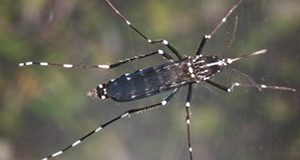
Being bitten by the container mosquitoes Aedes aegypti and Ae. albopictus means a higher risk of becoming infected with Zika, dengue, or chikungunya virus. Container mosquitoes develop in the water that collects in discarded tires, jars, cans, buckets, and boats. The best way to prevent irritating bites and dangerous mosquito-transmitted illnesses is to get rid of all trash that holds water. This 6-page fact sheet written by Amy Hallock, Eva A. Buckner, Ricky W. Telg, and Alena R. Poulin and published by the UF/IFAS Entomology and Nematology Department is packed with recommendations that will help you to successfully develop and host a cleanup event to reduce potential mosquito larval habitats in your community and keep yourself and your neighbors safe.
https://edis.ifas.ufl.edu/in1286
Sampling Guidelines and Recommendations for Submitting Samples for Diagnosing Laurel Wilt in Avocado Trees (Persea americana L.)
Laurel wilt (LW) is a vascular disease caused by a fungal pathogen transmitted to avocado trees by several ambrosia beetle species and through root grafts among adjacent avocado trees. A critical part of preventing and controlling plant diseases is determining the causal agent so that the appropriate management practices can be implemented to eradicate or contain the outbreak. Proper sampling is a critical step in disease diagnosis and in the determination of the causal agent of disease. This new 3-page publication of the UF/IFAS Horticultural Sciences Department was written by Jonathan Crane, Romina Gazis, Jeff Wasielewski, Daniel Carrillo, Bruce Schaffer, Fredy Ballen, and Edward Evans.
https://edis.ifas.ufl.edu/hs1394
The Life of Lichen
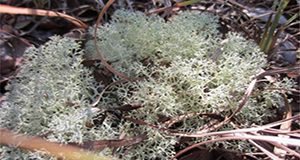
Lichen represent a fascinating combination of organisms working together to form some familiar and unfamiliar growths on a variety of substrates. This 6-page fact sheet written by James Stevenson, Lara B. Milligan, and Jennifer L. Gillett-Kaufman and published by the UF/IFAS Entomology and Nematology Department defines and explains these organisms.
https://edis.ifas.ufl.edu/in1296
Chilli Thrips on Blueberries in Florida

Chilli thrips, (Scirtothrips dorsalis Hood; Thysanoptera: Thripidae), is an economically important pest of vegetable, fruit, and ornamental crops throughout Asia, Africa, Oceania, the Caribbean, and some parts of South America and is an invasive pest in several US states. Chilli thrips were first observed in Florida in 1991. It was first recorded in blueberries in Hernando, Pasco and Sumter counties in July of 2008. This 4-page fact sheet written by Oscar E. Liburd, Babu R. Panthi, and Douglas A. Phillips and published by the UF/IFAS Entomology and Nematology Department discusses the life cycle of the chilli thrips, plant damage it causes, and management recommendations for chilli thrips in blueberries in Florida.
https://edis.ifas.ufl.edu/in1298
Recomendaciones para la Detección y Mitigación de la Marchitez del Laurel en Árboles de Aguacates y Especies Relacionadas en Jardines y Patios Hogareños
This is the Spanish translation of HS1358, Recommendations for the Detection and Mitigation of Laurel Wilt Disease in Avocado and Related Tree Species in the Home Landscape. Avocado trees are a popular choice for homeowners in Florida, with over 600,000 growing in Florida home landscapes. However, avocado trees as well as others in the Lauraceae family are susceptible to laurel wilt disease, which can kill a tree in as few as three weeks. This new 8-page publication of the UF/IFAS Horticultural Sciences Department provides home owners recommendations for identifying and mitigating laurel wilt disease in the home landscape. Written by Jonathan H. Crane, Jeff Wasielewski, Daniel Carrillo, Romina Gazis, Bruce Schaffer, Fredy Ballen, and Edwards Evans.
https://edis.ifas.ufl.edu/hs1384
Recomendaciones para el Control y Mitigación de la Marchitez del Laurel y sus Vectores, los Escarabajos Ambrosia, en Arboledas Comerciales de Aguacate en Florida
This is the Spanish translation of Recommendations for Control and Mitigation of Laurel Wilt and Ambrosia Beetle Vectors in Commercial Avocado Groves in Florida (HS1360). Laurel wilt and the ambrosia beetle vectors that transmit this lethal disease have and will continue to affect avocado production in Florida. At least 50% of the commercial producers are Hispanic Americans and some are more comfortable with publications in Spanish. The translator, Rubén Regalado, and reviewer, Carlos Balerdi, are both previous employees of UF/IFAS.
https://edis.ifas.ufl.edu/hs1379
Mite Pests of Southern Highbush Blueberry in Florida
This 4-page document discusses life cycles, damage, monitoring, and management of southern red mites and false spider mites in southern highbush blueberries. Written by Oscar E. Liburd, Lorena Lopez, and Doug Phillips, and published by the UF/IFAS Entomology and Nematology Department, June 2020.
https://edis.ifas.ufl.edu/in1284
